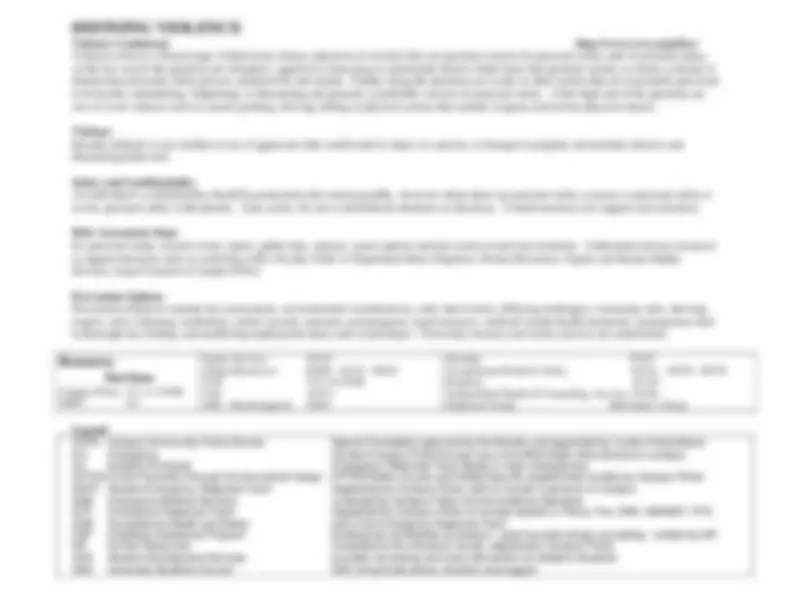



Study with the several resources on Docsity

Earn points by helping other students or get them with a premium plan


Prepare for your exams
Study with the several resources on Docsity

Earn points to download
Earn points by helping other students or get them with a premium plan
Community
Ask the community for help and clear up your study doubts
Discover the best universities in your country according to Docsity users
Free resources
Download our free guides on studying techniques, anxiety management strategies, and thesis advice from Docsity tutors
Every member of the University community has the right to study, work and conduct his or her activities in an environment free of violence. The University.
Typology: Summaries
1 / 2

This page cannot be seen from the preview
Don't miss anything!


2007
Every member of the University community has the right to study, work and conduct his or her activities in an environment free of violence. The Universityis committed to providing and maintaining such an environment through policies, resources, regulations, educational programs and community support. Violence is a shared concern and as such The University of Western Ontario will not tolerate violence, threats, use or intimidating use of a weapon orphysical conduct by a person which results in harm or ought reasonably have been known would cause harm to person(s), or property. Early intervention can prevent escalation.
This program provides information on ways to
identify and preven
t^ violence and potential violence from
occurring and ensure individuals know how to
effectively respond
as outlined in the
violence continuum below
Broadly communicate and reinforce standards of behaviour. Utilize resources. Conduct Risk assessments through CPTED. Intervene when people send “signals” that they are at risk of “losing their cool” with others. Seek resources for stress/ anger/ depression counseling before behaviour escalates.
Action: If behaviour occurs, stay calm and de-escalate. Faculty/ Dept. intervene quickly. Separate conflicting parties.
Support: Dean, Chair, Department Head, USC, SDS, Equity and Human Rights, HR, Registrar, Faculty Relations, Student/Staff Health & Counselling, EAP, Housing, Union; Campus Police
^911 when personal safety concerns, potential danger or Code of Student Conduct violations
Assess further risk; report; seek support to deal with current situation and prevent repeats. Document incident. Investigate & Follow-up
Broadly communicate and reinforce standards of behaviour. Conduct Risk assessments through CPTED. Intervene when people send “signals” that they are at risk of “losing their cool” with others Suggest people seek resources for stress/anger/ depression counseling before behaviour escalates. Utilize resources.
Action: If behaviour occurs, stay calm and de-escalate. Faculty or Dept. intervene quickly. Ensure physical safety. Report; assess, analyze, seek support.
Support: As above: Campus Police will investigate, assess risk, help establish a safety plan (may involve a Trespass Notice), work with Registrar & Legal Services if dealing with a student; or with HR and Faculty for employees.
Document incident. Investigate & Follow-up
Report personal safety concerns. Early intervention to reduce escalation. Educate all students, staff, faculty on diffusing procedures and safe responses. Incident investigation and accountability.
Action : If behaviour occurs, avoid escalation; Call
from
any campus phone.
Support: Campus Police
OHS, HR, Housing; CCPS will follow up in Criminal Cases and for Code of Student Conduct violations
Seek safe location, report incident within your faculty or department.
Establish safety procedures and safe locations Educate all students, staff, faculty on procedures, safe responses and safe locations All incidents will be thoroughly investigated with appropriate follow-up and review.
Action : If behaviour occurs, avoid escalation; Call
Seek shelter where you are; lock doors, avoid windows; evacuate public areas.
The Incident Commander will communicate next steps.^
Support: Campus Police
OHS, ERT, London Police; Campus Police will follow up in Criminal Cases and for Code of Student Conduct violations. HR and EAP will be involved with employees.
911 or 83300 SERT^
Equity Services
Human Resources
SDS^ (Psychological)
Housing
Occupational Health & Safety
Registrar
Student/Staff Health & Counselling Services 84730 Employee Group
Individual’s Group
Campus Community Police Service
Special Constables approved by the Ministry and appointed by London Police Board
Emergency
Contact Campus Police through any of the 8000 black office phones on campus
Incident Command
Emergency Response Team leader in major emergencies
CPTED Crime Prevention through Environmental Design
CPTED/Safety courses and Safety/Security assessments (audits) by Campus Police
Student Emergency Response Team
dispatched by Campus Police radio to injured/ ill persons on campus
Emergency Medical Services
contacted by Campus Police Communications Operators
Emergency Response Team
dispatched by Campus Police & includes leaders in Police, Fire, OHS, HAZMAT, PPD
Occupational Health and Safety
part of the Emergency Response Team
Employee Assistance Program
professional confidential counselors – post traumatic stress counseling - contact by HR
Human Resources
contacted by the individual, faculty, department, Campus Police
Student Development Services
provides counseling and crisis intervention for Western Students
University Student’s Council
USC will provide advice, direction and support